
Introduction & Background:
As a resident of Pune, there’s absolutely no dearth of hikes and trails around the city which can be accessed in every direction you head. Apart from the serene forest cover of the Sahyadris, there are hundreds of forts scattered across the state, reflecting the might of the Maratha Empire. Out of these, Rajgad, which literally translates to ‘King of Forts’, is one of the grandest you can visit.
Captured by Chhatrapati Shivaji Maharaj in 1647, Rajgad was the first capital of the Maratha Empire for close to 26 years. The fort stands tall at 4,514 feet, with dense jungles surrounding the base of its 24-mile diameter. A true strategic stronghold!
Arriving at Rajgad’s Base Village:
Located only 60 kilometers from Pune, I had personally hiked to Rajgad fort half a dozen times. Exploring different corners of its massive rock cut architecture on each occasion. Each season also brought about its own charm, vistas and colors. Last winter, a close friend had recently discovered a newfound passion for the outdoors and was looking for a short and sweet one-day excursion. Rajgad was the ideal spot to expand his introduction to the Sahyadris. It also provided me a lovely opportunity to document a hike I thoroughly enjoyed!
We arrived at the base village of Gunjavane a few minutes before sunrise. Post a quick pause for cutting-chai, we set course!
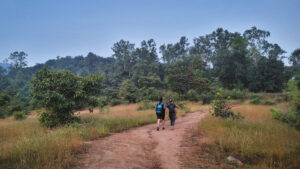
Beginning the trek to Rajgad from Gunjavane
The Serene Trek to Rajgad – Through the Jungle!
The trail gently winds through the old farmland and forests of teak, bamboo and mango! The route then ascends towards a long ridge with the menacing figure of Rajgad fort in the distance!
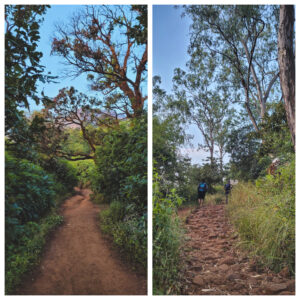
Enchanting forests of the Sahyadris
As we got a little higher, the ridgeline towards the east was subtly silhouetted and through the foliage, we caught a golden ball of fire slowly emerge as the glow of the rising sun bathed us.
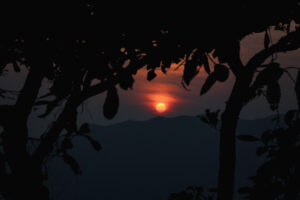
rajgad fort marathi
The remnants of the monsoon showers and the autumnal October heat were both evident as we surfaced onto a small plateau. Lush green slopes stretched around us, sporadically interrupted by sun-scorched patches of wild grass—hallmarks of the Sahyadris in transition.
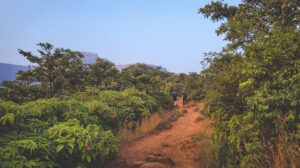
rajgad fort difficulty level
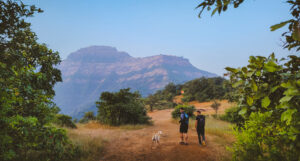
Emerging from the forest with our canine companion!
We were now about an hour into our hike. Unexpectedly, the winter chill we’d hoped for had quickly given way to a steadily rising mercury and it almost felt closer to summer! Nonetheless, with so much beauty around us, we weren’t going to let the weather dampen our spirits.
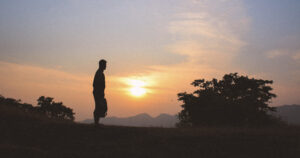
Beautiful silhouettes on the plateau as we ascended past the initial forest!

Smiles all around. A picture perfect day!
Entering via the Chor Darwaza of Rajgad:
The final phase of our climb to Rajgad Fort had begun. We traversed the hillside with a 500-foot drop on our right, now safeguarded with railings. Furthermore, we had to ascend centuries old, steep rock-cut steps that led to the famous ‘Chor Darwaza’ of the fort.
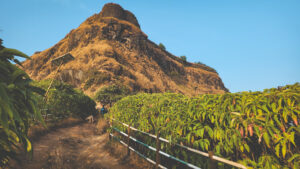
Approaching the Chor Darwaza!
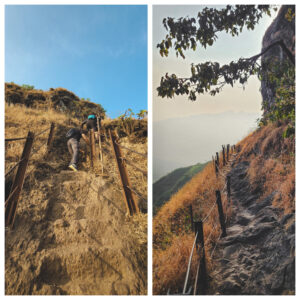
The steep rock-cut steps and the old trail.
Several forts in Maharashtra feature a tiny, secluded entry-exit point known as the Chor Darwaza. This literally translates to ‘thief’s gate.‘ Usually well camouflaged, it primarily served as a last resort or emergency exit for the royal family and troops during battles or ambushes. The trails leading to and from these Darwazas are extremely tricky, often opening into deep ravines, dense forests, or sheer cliffs. This made them easy to guard if ever discovered, and it was nearly impossible to pursue anyone through without prior knowledge of the route. The Chor Darwaza also served another vital purpose—enabling secret communication and transfer of supplies during wartime without drawing attention.
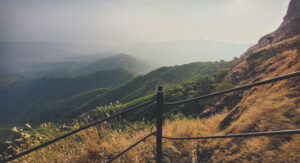
The magical valleys of the Western Ghats.
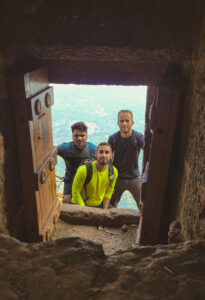
Thieves at the Chor Darwaza 🙂
Padmavati Machi on Rajgad
In modern times, this intricately carved gate solely marks the entrance to the Padmavati Machi. Locals used the word ‘machi’ for flat plateaus or long arms of the fort that served as housing for troops and stored supplies and arms. Naturally, these were also the first line of defence during times of war.
After a silent prayer at the Shivling of Rameshwar temple, we walked along the teal blue expanse of the stunning Padmavati Lake. A vivid contrast to the yellowish-orange hues of the wild grass all around!
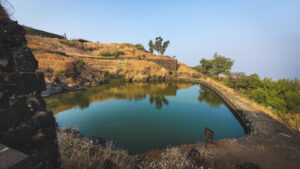
rajgad fort pune
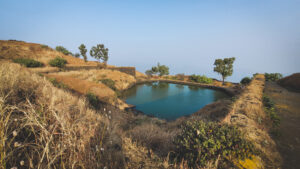
The gorgeous Padmavati Lake!
Exploring the entirety of Rajgad Fort in a single visit is no mean feat. There are several paths to various darwazas and machis, namely the Alu Darwaza on the Sanjivani Machi, the secret Gupt Darwaza and Hatti Prastar (a nedhe or needle hole in a rock) on the eastern Suvela Machi and the Pali Darwaza on the Padmavati Machi.
Onwards to Rajgad’s Balekilla
With limited time, our plan was to head towards the central part of the fort and climb up to the Balekilla, or citadel. This is the highest point of the fort, where the Rajwada (royal palace) lies, along with several courtyards, water cisterns, and the crumbling remains of bastions scattered around its boundary.
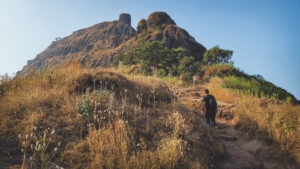
Walking towards the Balekilla or citadel of Rajgad.
From the machi, the well-established trail passes along the gigantic face of the hill atop which the Balekilla is built. You can feel the immersion with nature at this point with several trees arching over the path and roots the size of barks fused into the hillside. Halfway through, a long, winding rock cut staircase beckons the brave upwards towards the Maha Darwaza!
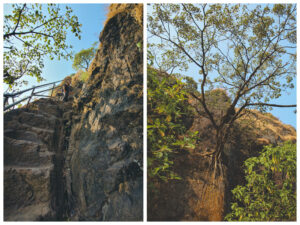
Intertwined with the wilderness!
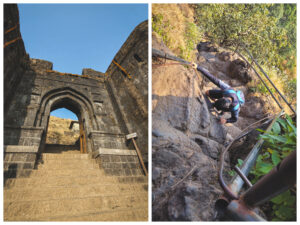
The even steeper staircase to the Maha Darwaza.
For those willing to overcome the innate fear of heights triggered while climbing up, the panoramic vistas from the proverbial summit of Rajgad make it all worthwhile.
Tens of brimming water cisterns are littered all around, a quick glance into how lives were lived centuries ago! Some of them still hold relatively potable water which you can drink if you camp on the fort (ideally after a little purification if possible).
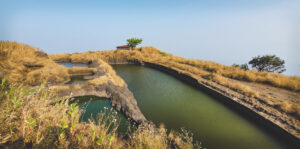
Sublime colours in the water cisterns!
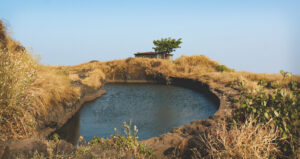
360° Panoramas from Rajgad’s Summit
A quick swivel from the top of this citadel offers unhindered views of the Western Ghats. The forts of Torna and Sinhagad are easily visible on clearer days—unlike our relatively hazy, post-Diwali panorama!
One of the prettiest vistas, in any season, is that of Sanjivani Machi from the Balekilla.
In the foreground you can see the battered fortress and cisterns with the machi sprawling in the distance.
Towards the right, you can faintly glimpse the ridgeline which connects Rajgad (via Alu Darwaza) to the fort of Torna.
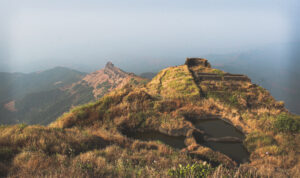
Sanjivani Machi of Rajgad. From the Alu Darwaza on this machi, you can start the long trek to Torna Fort.
Further west, between the Sanjivani and Padmavati Machi, lies the village of Pali. Standing on the edge, you can spot the entire route to the Pali Darwaza with ant-like hikers inching closer.
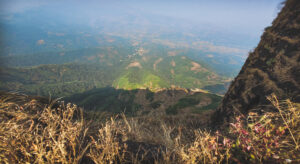
Pali Village and the route to Pali Darwaza.
Finally, turning back towards Gunjavane, we got a perfect bird’s eye view of the trail we had hiked.
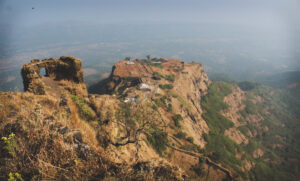
Padmavati Machi and the trail to Gunjavane on the right.
It was around 10 AM, after a few final glances around, we bid adieu to the bastions of Rajgad.
Every crevice in these stone fortifications now hosts wild shrubbery—nature quietly reclaiming its own!
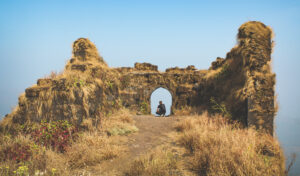
Where Eagles Soar!
Departing Rajgad – Another Wonderful Visit!
As you make your way down the Maha Darwaza, the snaking outline of Suvela Machi lies in the background.
The trail leading to it is another 45 minutes. One we’d explore the next time around.
A reason to return once again!
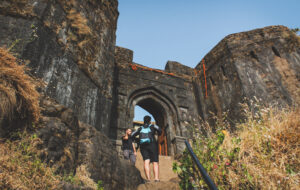
rajgad fort full hd images
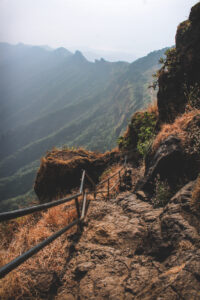
Suvela Machi of Rajgad in the distance!
Rajgad is also infamous for honeybee attacks. While pausing to capture a hanging bark with its moss-laden branches, we spotted several large beehives beneath the Balekilla. This was no time for reflection.
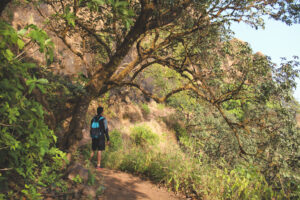
fort rajgad
Hastily retracing our steps back, we only paused once we arrived back at the junction of Padmavati Machi. The relief clearly evident!
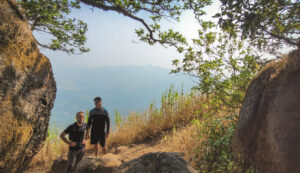
A day well spent!
We’d been exploring on trail for over three and a half hours by now. It was a public holiday and the crowds were slowly but surely beginning to ascend. Our early start paid off, and I was super glad my friend got to experience the trek in relative peace and quiet. Just the way it was always intended.
Snapping a quick self portrait, the three of us departed from Rajgad!
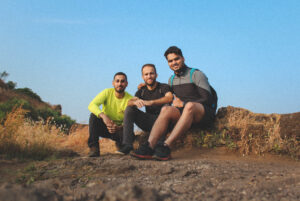
The three musketeers!
Turning Back the Pages of Time!
The Chor Darwaza has a quirky ability, albeit briefly, to transport you to a time long gone!
The elaborate passage through rock. The exquisite wooden doors. The vantage of the valley below.

Peeping through History!
Hiking up to the fort today is driven by leisure and a deep love for the outdoors.
Yet, one can only imagine stepping into the shoes of a trusted messenger nearly 400 years ago—quietly slipping out of this very darwaza under the shadows of twilight!
And disappearing into the jungles below. Untraceable!
For more such stories from the Sahyadris & Himalayas follow us here:
Adventure Pulse (@adventurepulse) | Ayush Kanitkar (@whyrationpassion)
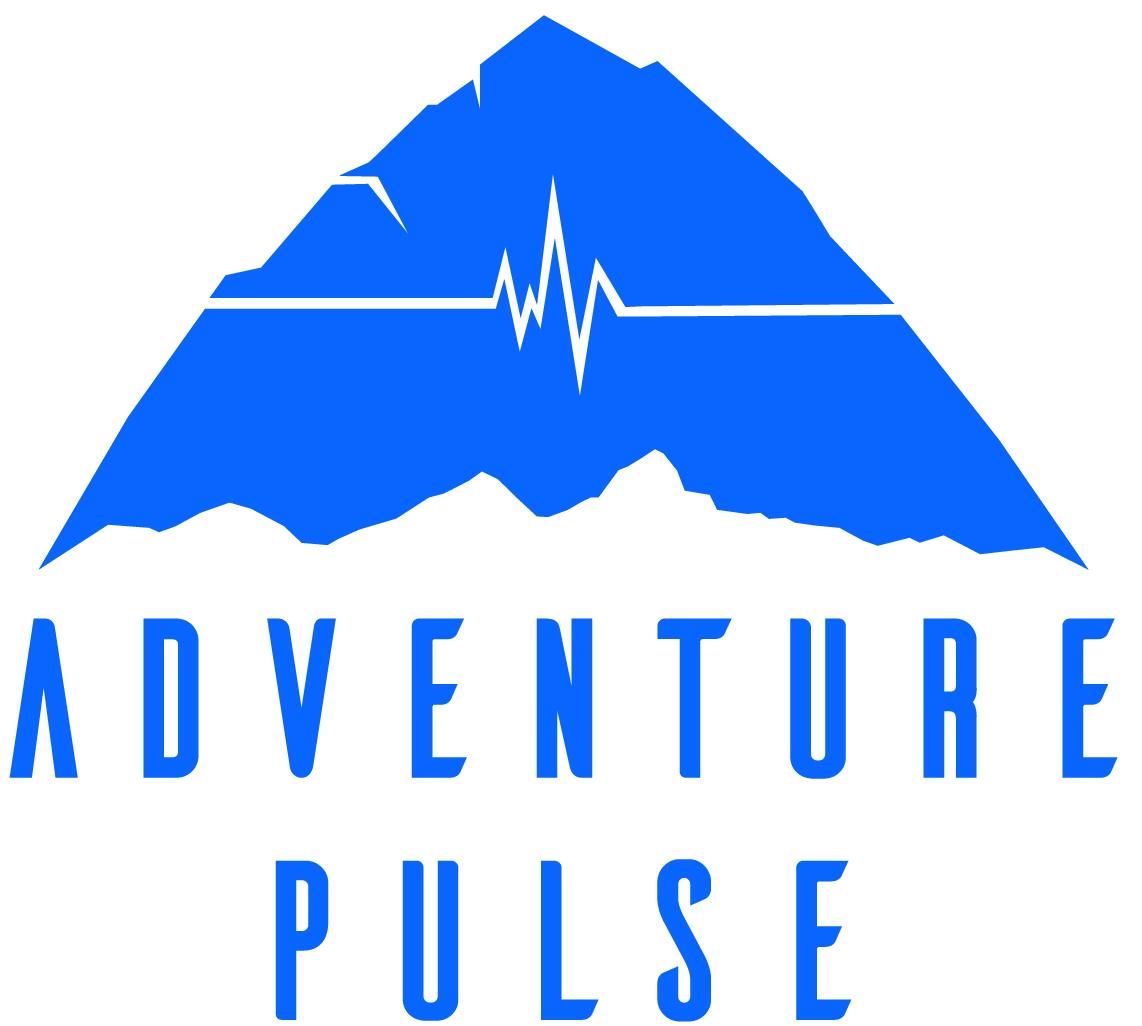

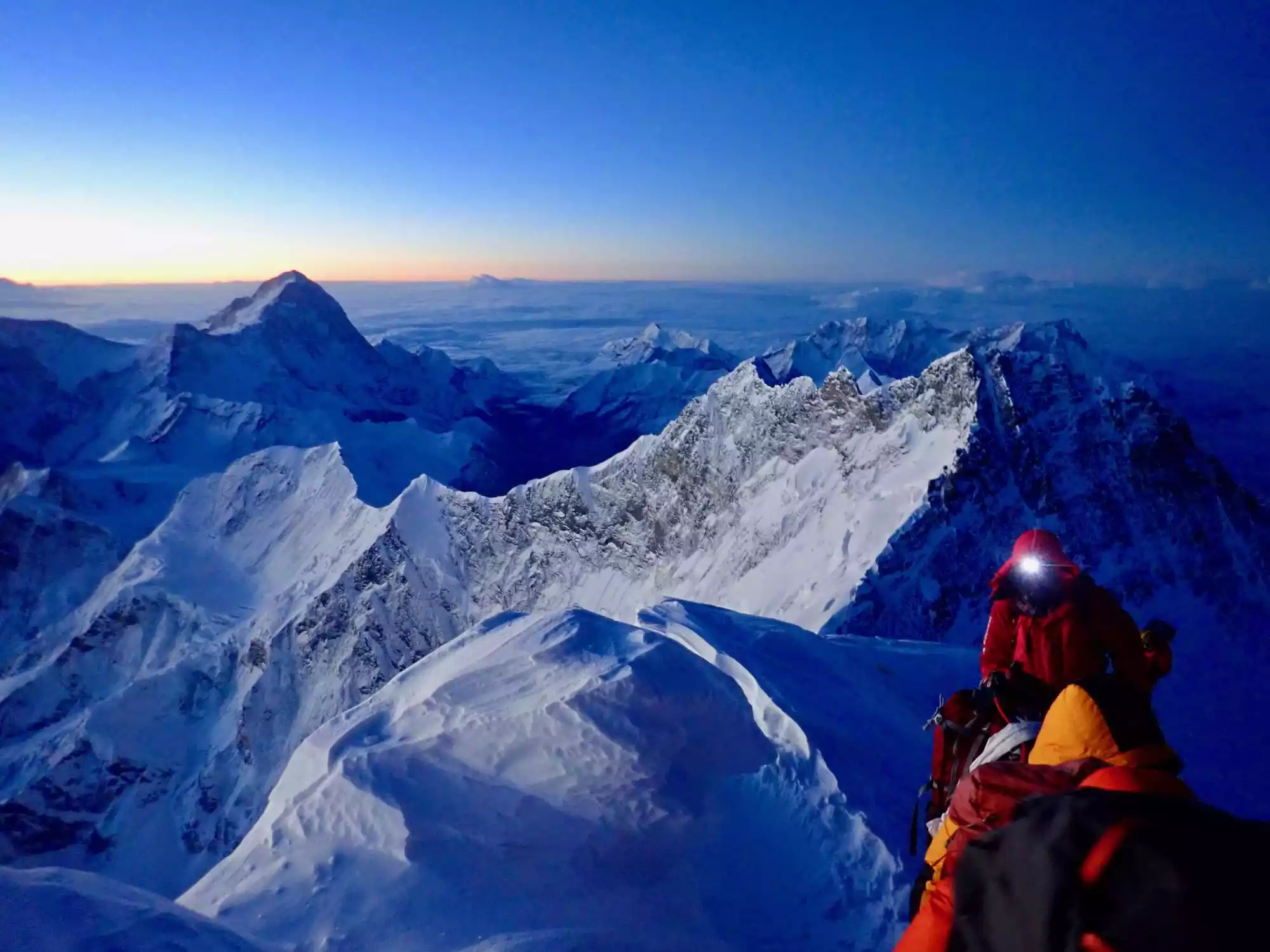


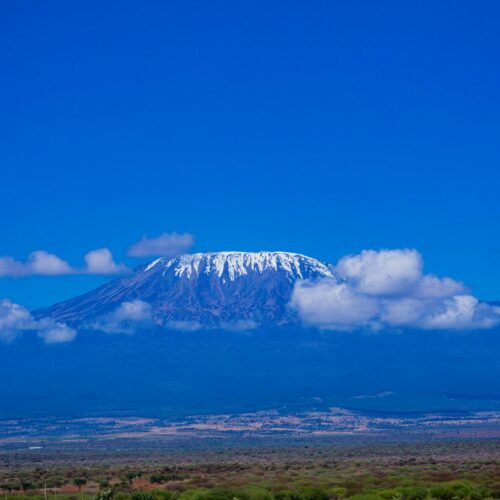


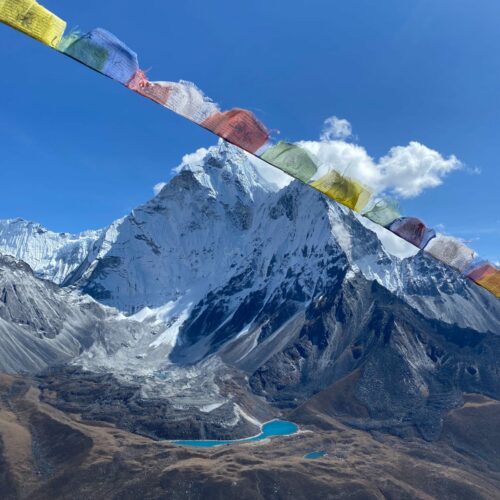
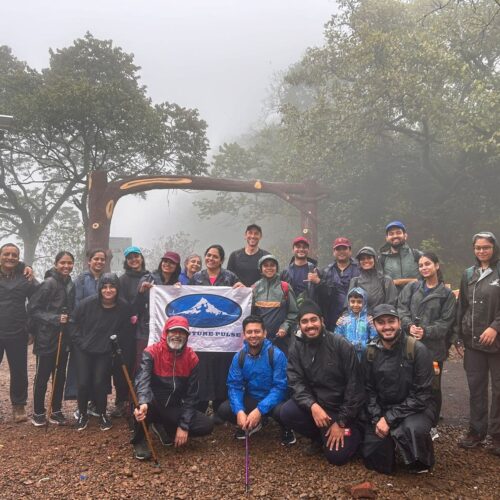
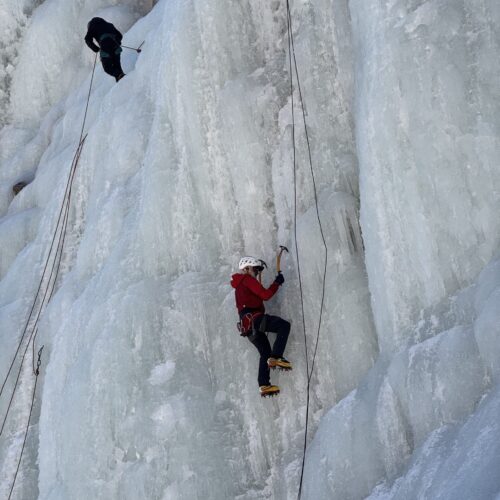
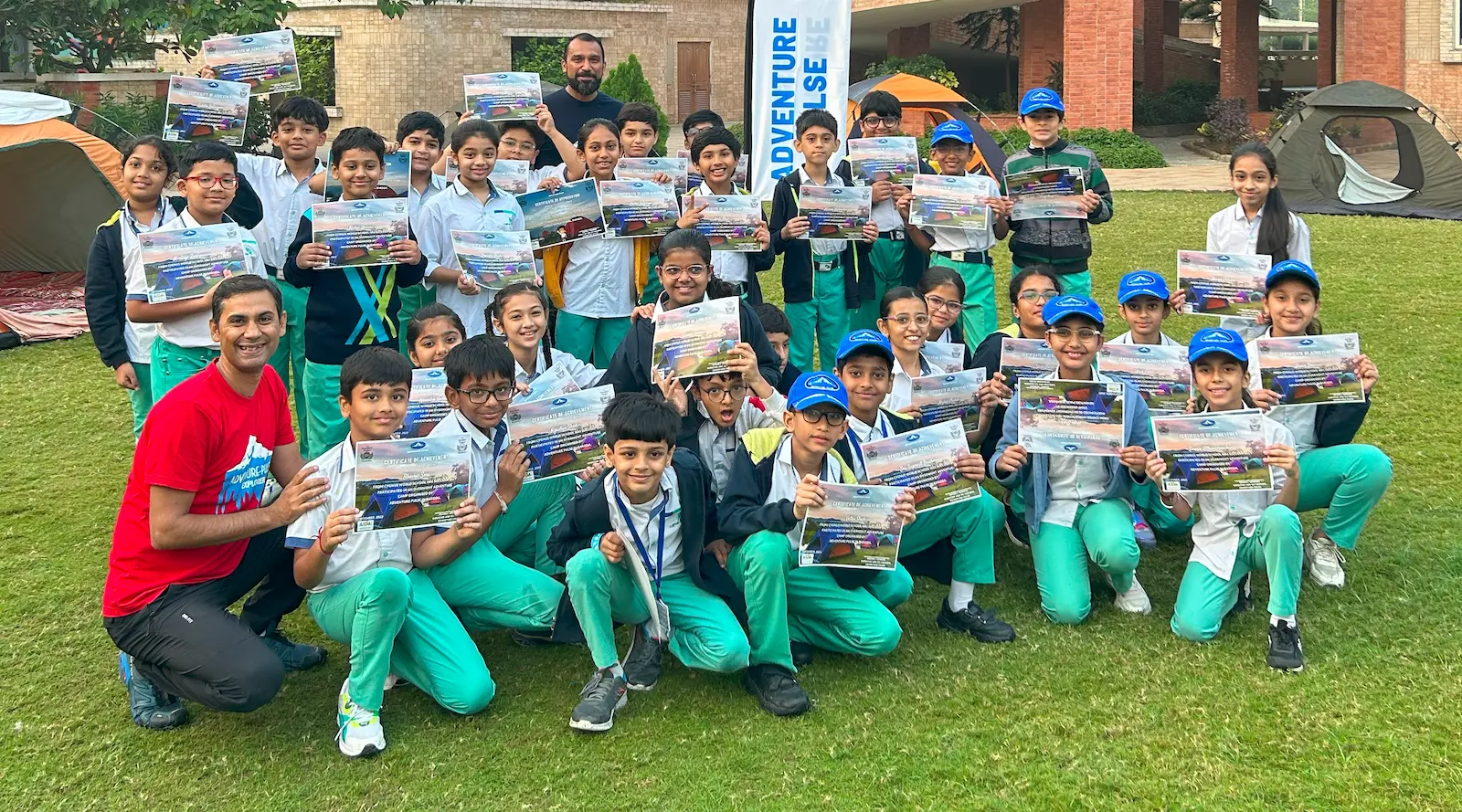
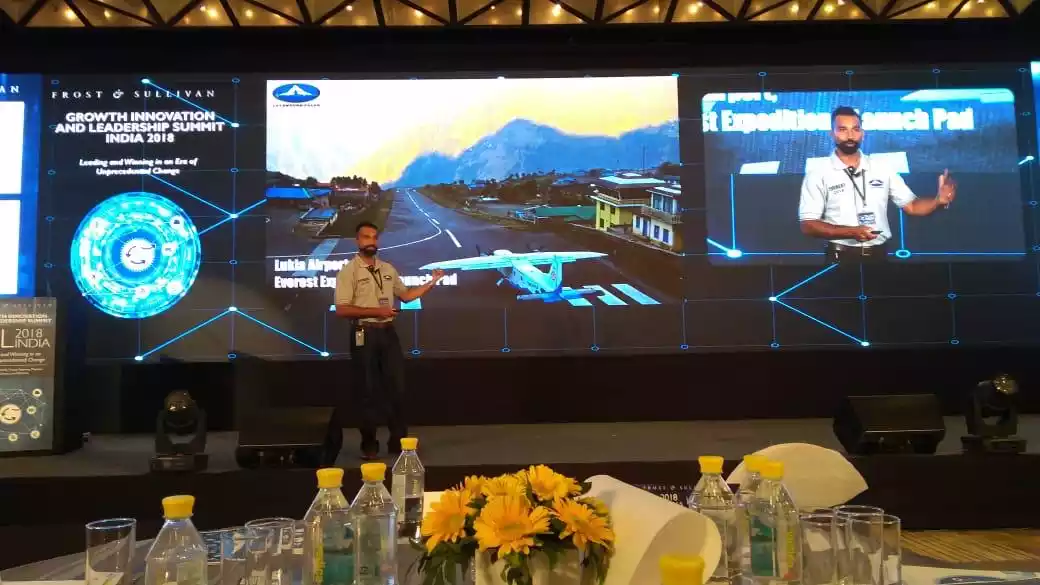
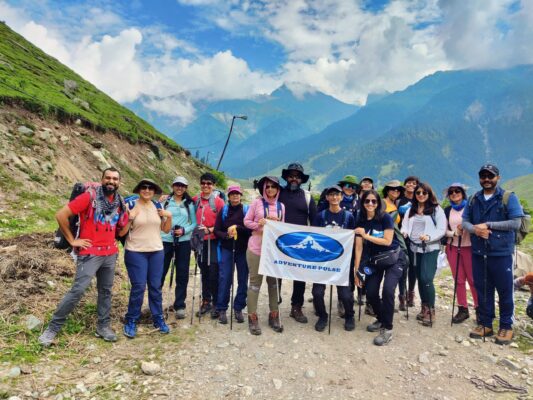



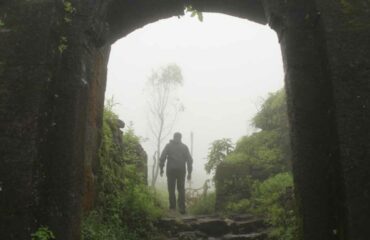
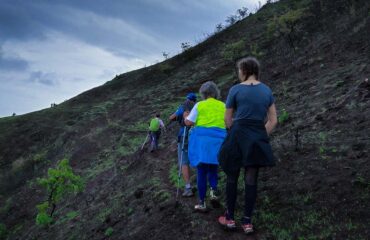
Rajgarh and Raigarh — is it one and the same, as both the names are used interchangeably in the internet data. I seek clarification on this point.